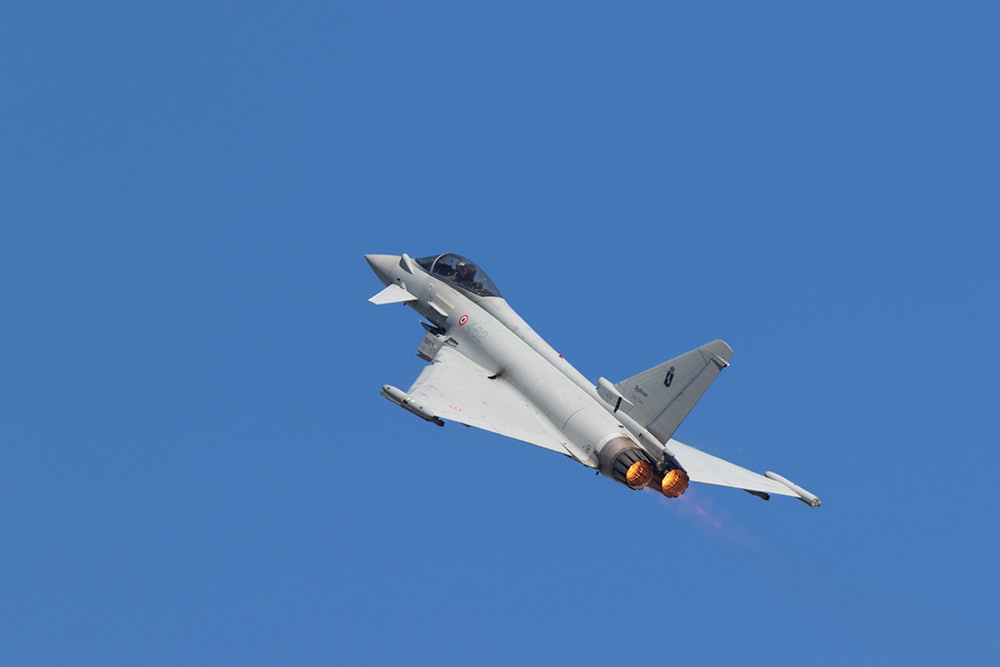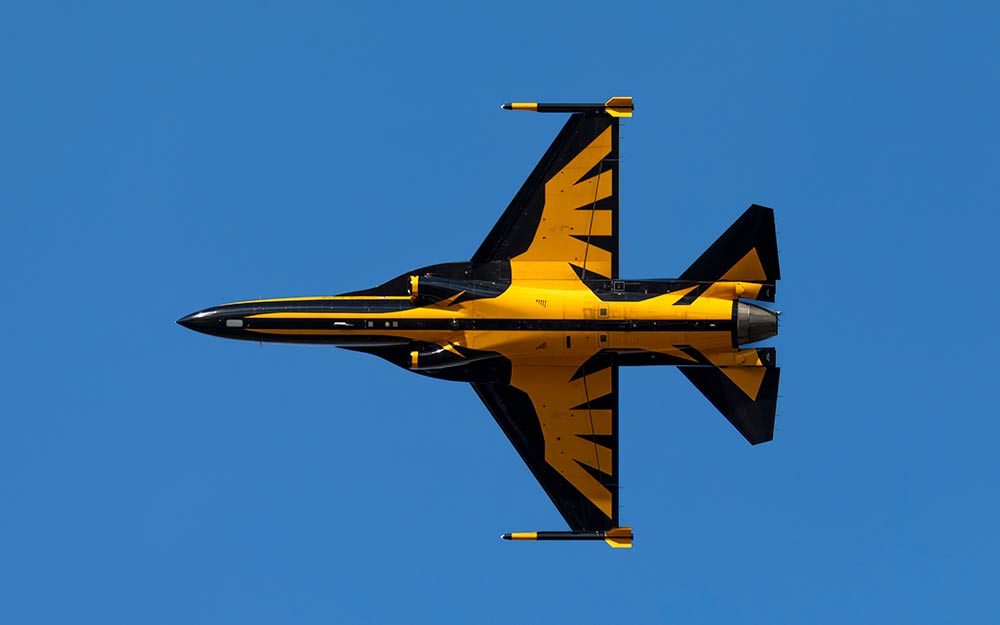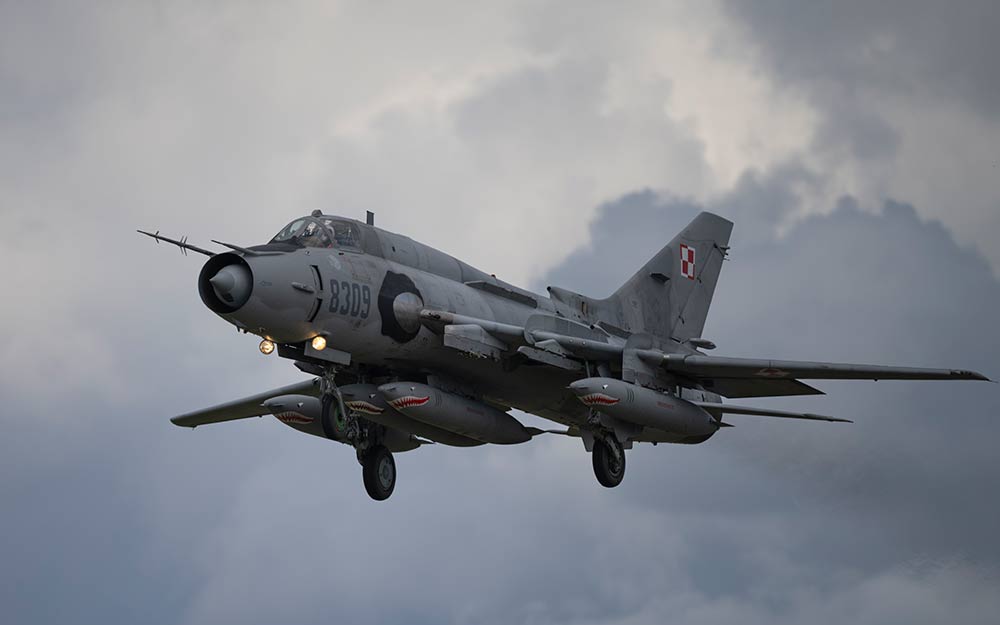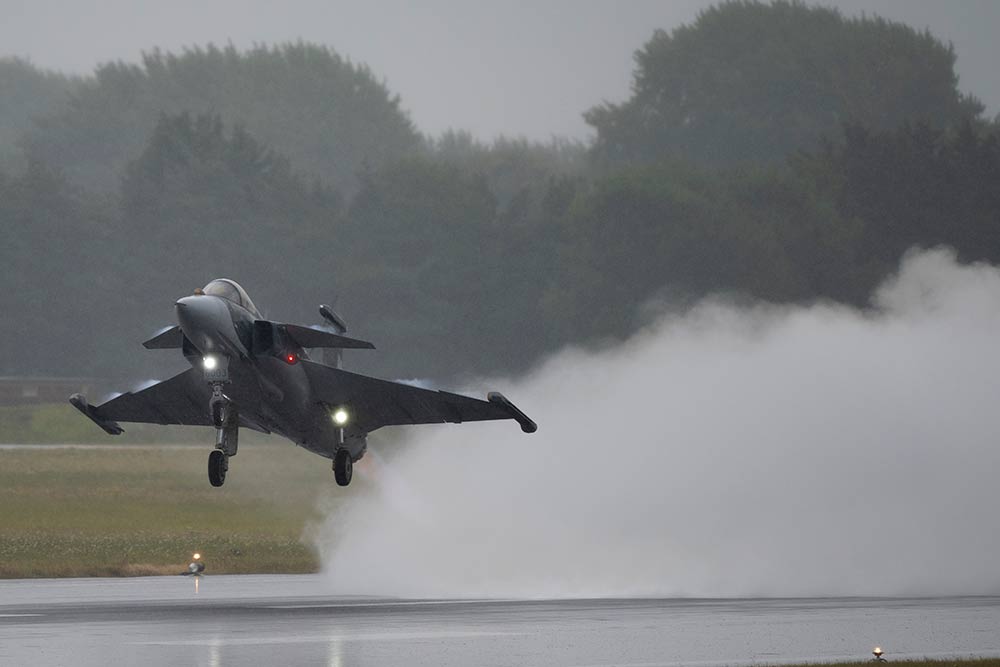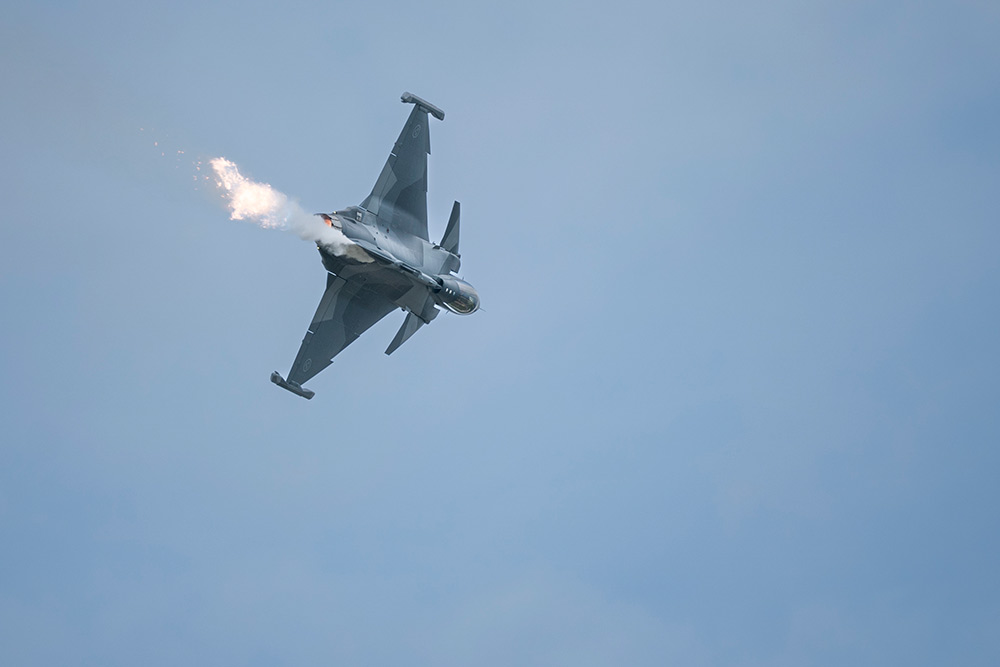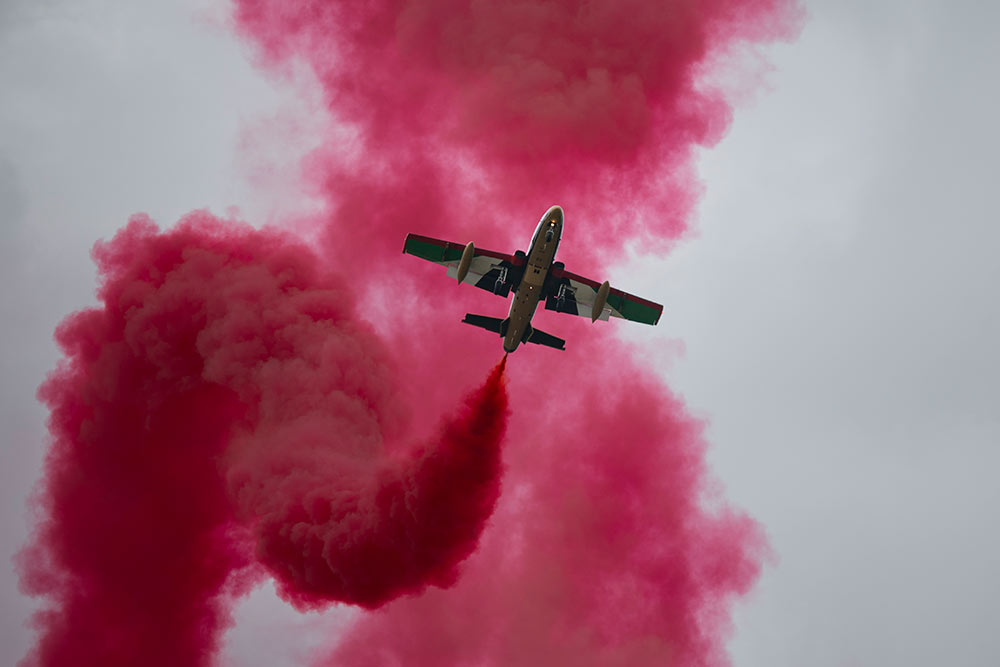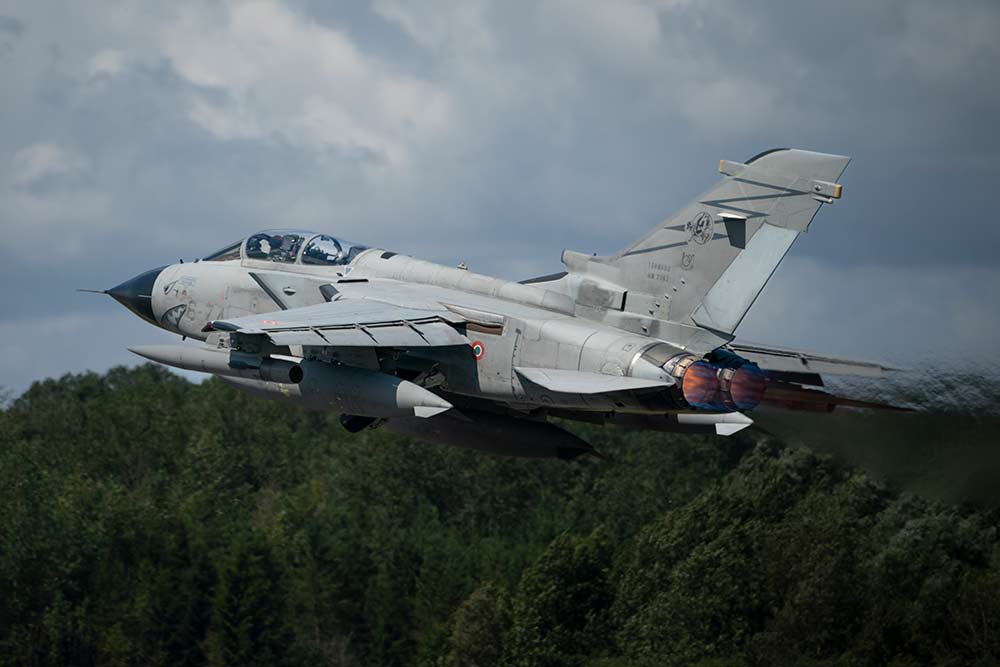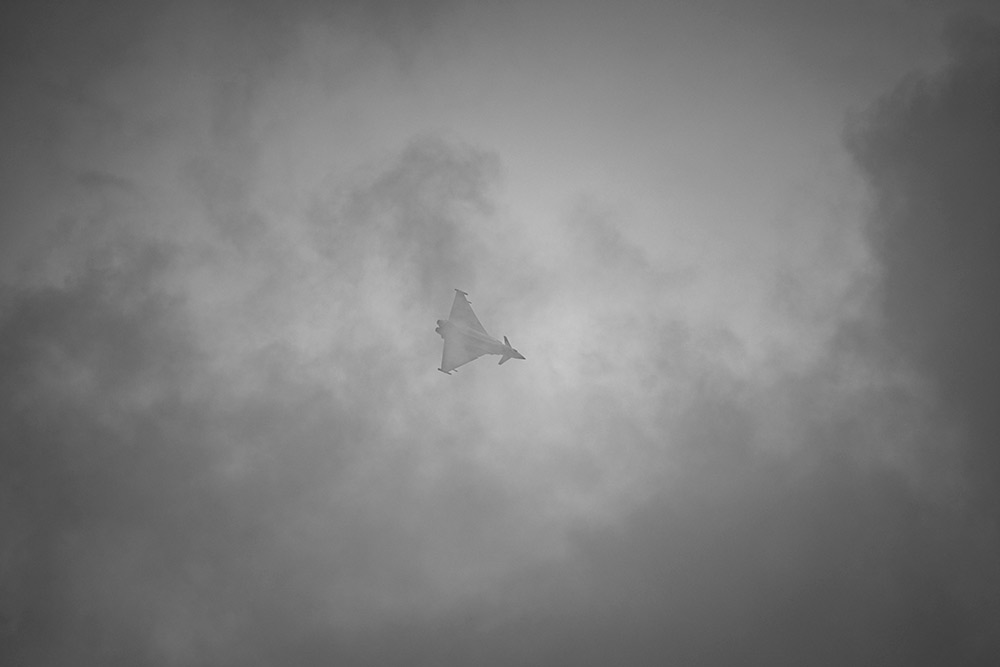How To Shoot An Air Show, What Settings, Why and When?
What a difference 12 months makes! From the scorching temperatures and clear blue skies of 2022, the Royal International Air Tattoo of 2023 was a wet and windy week in the corner of the Cotswolds. Over this 6 day gathering of air arms from across the globe, the weather this year presented a very different challenge to the year previous.
In this blog, we’ll look at what can be done to overcome adverse weather and difficult conditions in aviation photography, as well as some of the benefits that can come from braving the elements, along with relevant settings to accommodate.
Click on any of the images in this blog to view them in full resolution.
A look back to RIAT’22.
Although we all love a bit of sunshine to keep us warm and dry, for us aviation photographers, any aircraft against a boring and bland blue sky will usually end up as just that. The image below of the Italian Typhoon on take-off with full burner, as nice as a shot as it is, taken to bare bones, is simply an aircraft and bright sky.
Canon EOS 7D Mark II – Canon EF 100-400mm f4.5-5.6L IS II USM, 1/1000 – f5.6 – ISO 160
This can be helped and a better image made with certain aircraft that contrast well with the blue, such as this Kai T-50B of the South Korean Black Eagles Display Team, however, this still boils down to just a photo of an aircraft, and no real story being told.
Canon EOS 5D Mark IV – Canon EF 100-400mm f4.5-5.6L IS II USM, 1/640 – f5.6 – ISO 100
What is the best weather for airshow photography?
So, we’ve decided we aren’t looking for clear blue skies, so what are we looking for?
In a nutshell, as with any style of photography, the best images tell a story. You can have the sharpest and longest lens, the most megapixels, and the best autofocus, but if the image doesn’t connect to the viewer, for most people, the image will be lost. When the weather turns, and the clouds roll in, interest is always generated. It gives images a moody feel, often with more drama, and allows the backgrounds to become something more than a single swathe of colour.
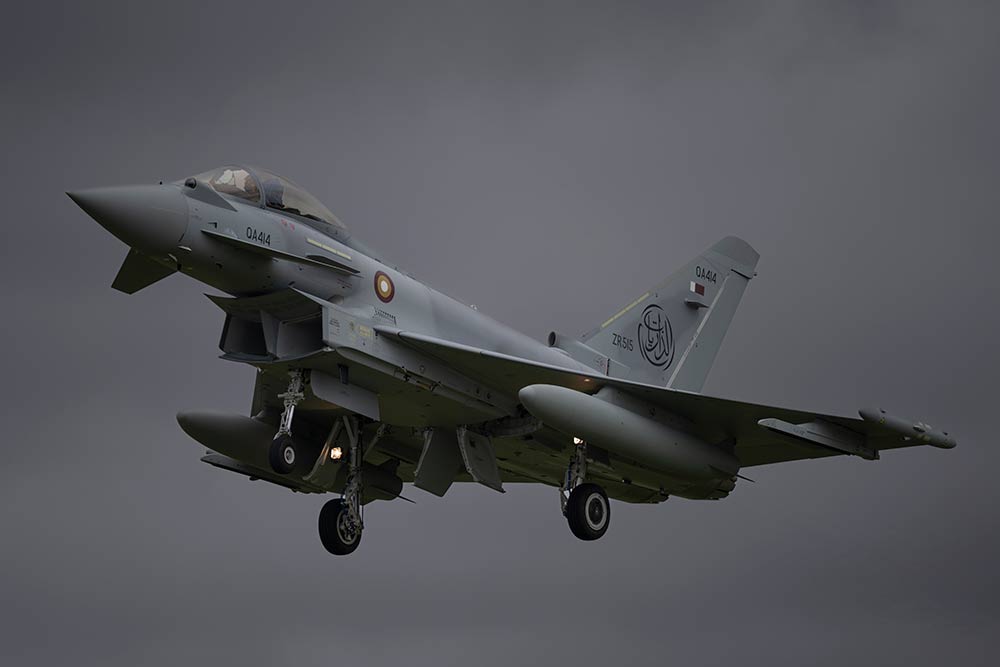 Qatari Typhoon Arrival, - Sony A7R V - Sony FE 600mm f4 GM, 1/2000 -f4 - ISO 100
Qatari Typhoon Arrival, - Sony A7R V - Sony FE 600mm f4 GM, 1/2000 -f4 - ISO 100
This naturally asks the question, is grey better than blue? An all-grey sky can be just as dull as a clear day, plus you’re dealing with a lot less light. The ideal weather conditions for aviation photography, therefore, sit somewhere in between. With broken clouds generating lots of interest, but without sacrificing that oh-so-critical light source.
When it all comes together, it really works.
SU22 Arrival – Sony A7R V – Sony FE 600mm f4 GM OSS, 1/2000 – f4 – ISO 100
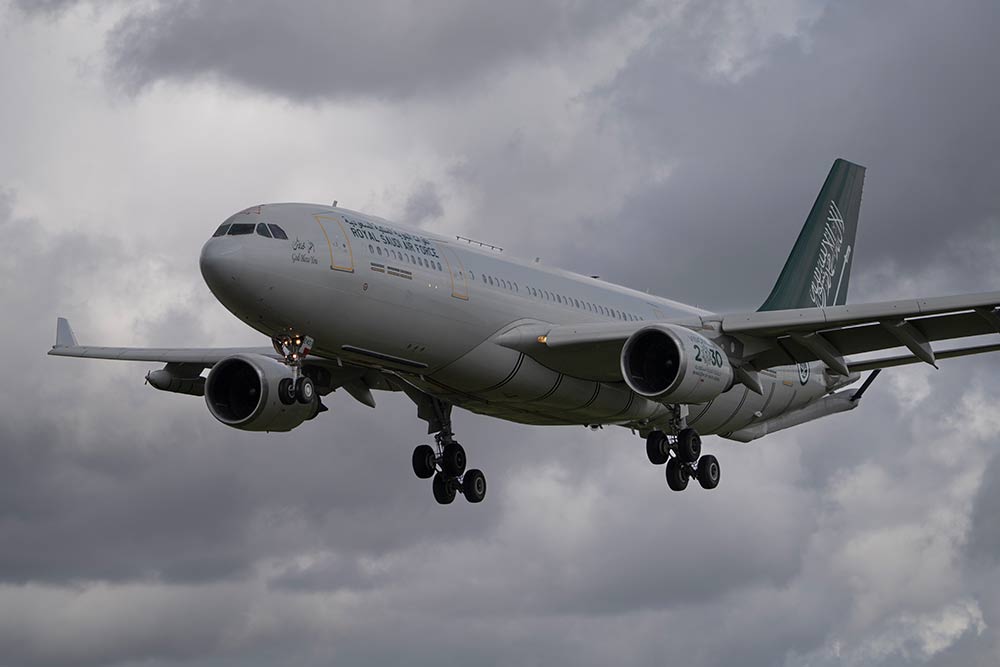 Saudi A330 Arrival – Sony A7R V – Sony FE 200-600mm f5.6-6.3 G OSS, 1/1250 – f6.3 – ISO 100
Saudi A330 Arrival – Sony A7R V – Sony FE 200-600mm f5.6-6.3 G OSS, 1/1250 – f6.3 – ISO 100
Bring this all together and you’re in for some fantastic photography.
Rain is a different story, however.
Can you take aeroplane photos in the rain?
When the taps turn on and it starts to rain, this isn’t always time to head inside and give up hope. In a nod to the improvement of rain covers for lenses, along with better in-built weather sealing, these kinds of shooting conditions test your own willpower more than your gear.
With moisture comes humidity. When due point and temperature move ever closer, fluff ensues. Some of the best images can be had in these conditions, whether it be an aircraft clearing the runway of standing water or pulling G in a turn and seeing the aircraft disappear in its own puff of cloud, the test here is the mental resilience to getting soaked through!
Gripen E Take Off, Sony A7R V – Sony FE 600mm f4 GM OSS, 1/1000 – f4 – ISO 250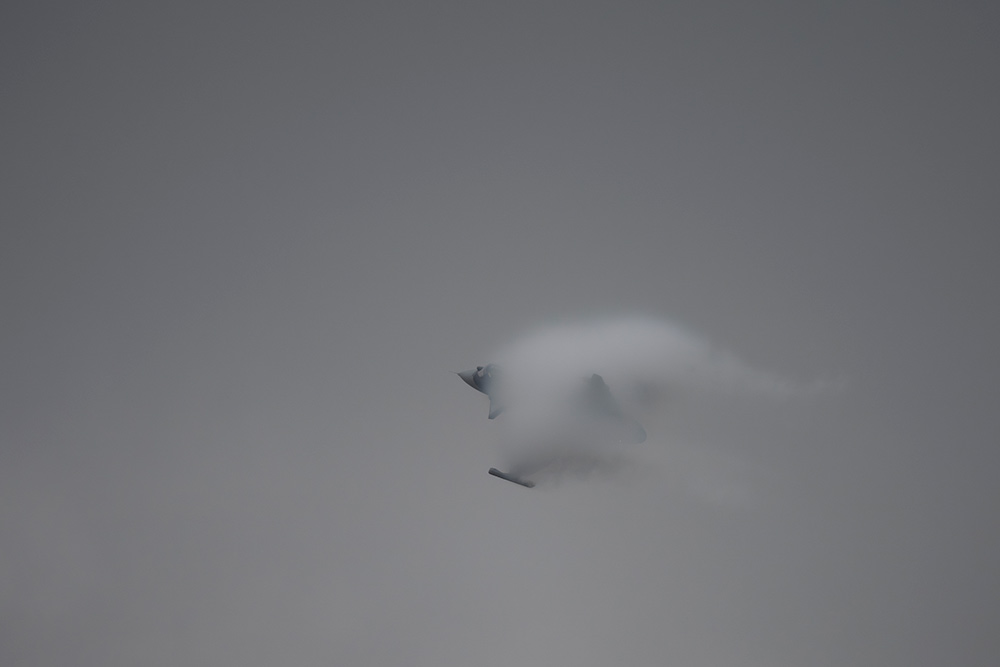
Gripen E Fluff, Sony A7R V – Sony FE 600mm f4 GM OSS, 1/1250 – f4 – ISO 250
Having all this change in weather leads to sudden changes in light level that need to be kept an eye on. This is much simpler these days in mirrorless systems whereby your exposure is always in front of you. With DSLR’s, a lot more monitoring of each pass was needed to keep on top of and adjust where necessary.
The exposure triangle for action photography
All three aspects of exposure – ISO, Shutter Speed and Aperture – are intrinsically linked as has been covered many times, (and much better than by myself) however, specifics can apply to aviation photography.
Shutter Speed
Shutter speed is very much dependent on the subject at hand. As a general rule of thumb:
Jets – A fast shutter speed (as fast as possible that keeps correct exposure), unless there is a nice background and you’re looking to use the motion blur effect. For most displays, however, this wouldn’t be the case. (Great for landing shots!) Upwards of 1/640 for slower or larger aircraft, for solo fast jets, upwards of 1/1000.
Turboprops – Anything faster than helicopter blades go between 1/125 and 1/300. This will give some nice blur but just be wary that the longer the lens, the less likely it will be sharp all the time. Make use of any stabilisation you have and understand that this is a numbers game. Take more shots for a higher likelihood that one will be sharp. Don’t be too disappointed if they’re not, smooth panning takes a lot of practice.
Slower moving propellers (Helicopters) – Use a slow shutter speed between 1/80 to 1/160 depending on the aircraft type. These tend to be slower moving than their fixed-wing brethren, however, with slower shutter speeds comes more pronounced camera shake. As above, you have to play the numbers game.
The Osprey – If you can take a photo that includes prop blur and a sharp aircraft fuselage, while in the sky, you’ve cracked it (in my opinion, the hardest aircraft to photograph!)
Aperture
I’ll keep it short and sweet, for all the above, go as wide as possible. The more light you have available the better, and the longer you can shoot into the worsening conditions.
With the distances to your subject involved, and the background usually being sky, the depth of field doesn’t make as much of a difference as if you were on a portrait shoot.
What does make a difference is being able to throw that aperture open to allow in more light. To have f4 available over f6.3 was much needed at RIAT 23, and allowed for more keepers by maintaining a high shutter speed.
A side benefit of this was that with aircraft arriving, the backgrounds were notably softer than when shooting at f6.3, owing to being closer to the subject which blurs out the background more considerably. Whether the difference between the Sony 200-600mm f5.6-6.3 lens and 600mm f4 being over £10,000 is worth that extra benefit, is personal to the individual.
With slower shutter speeds, comes a closing down of the aperture to balance the exposure compensation, with fast glass, this is where drop in ND filters come in handy.
Caveat – If the light permits to shoot at f8 where your particular lens is notably sharper, balance with shutter speed and ISO to make use of the bump in sharpness.
ISO
With cameras now having a dual base ISO system, this is where you can be more selective. Previous experience with the Sony Alpha A7 IV with dual base at 100 and 400, meant that shooting at ISO 400, with a slower aperture in the 200-600mm f5.6-6.3, meant that shutter speed could still be ramped up without introducing more noise into the image.
Get to know where your camera performs best, and try to keep it around these values – ISO 100 isn’t always the route to go. Especially with new AI processing techniques and noise reduction available, along with cameras handling higher ISO better with each incremental update to processing, expose the shots correctly and there is a lot more flexibility within the editing stage to rectify any increase in noise.
Planning!
One of the most important things when looking to take aviation photography to the next level is planning as best you can. There is plenty of footage and images readily available of airshow sites and aircraft routines, this means that you can pre-plan for a specific shot. Equally, if there are rehearsals or validation displays, these are also great for working out what is going to happen and when.
Once you know what type of shot you’re looking to take, it’s as simple as getting into the right place at the right time. This does mean you’ll be running up and down the display line so I strongly recommend some good walking boots or trainers! From the display validations and general working out of what will be where this year, the following shots came to mind and managed to come off.
The Saab Gripen E performed a crowd line topside pass while pushing inverted. This meant that fuel was released to equalise pressure in the fuel tanks, subsequently flowing directly into the engine exhaust – a common feature of the Gripen aircraft that causes a burst of flame when the fuel hits the heat of the engine. Being right down the crowd line, it was intended to have the aircraft heading away, with the trail of fire catching light as the main focal point.
Gripen E Burn, Sony A9 II – Sony FE 600mm f4 GM OSS, 1/2000 – f4 – ISO 160
The next shot in mind was the Fursan Al Emarat team with their solo pilot performing the ‘crazy flight’ pass. The team had the most colourful and vibrant smoke of the whole show and knowing that the pass started on the crowd left 45, it was a great chance to have the wild smoke pattern in the background, with the aircraft at an off angle. This was visible for about 4 seconds when the smoke trail and the aircraft were lined up before turning onto the A-axis.
Fursan Crazy Flight, Sony A9 II – Sony FE 600mm f4 GM OSS, 1/2500 – f4 – ISO 160
The third photo planned was one that had eluded for a few years, that of a German Tornado departing on full afterburner. An iconic shape in the skies over Britain for many years, this much-adored aircraft can still win the hearts of many in the crowd at these events.
From the position in the grandstand on departure day, a rare moment of sunshine illuminated the aircraft with the afterburners in full glow. The iconic fin tail of the Tornado standing proud above the fire and noise from the engines. This was made possible by knowing that the aircraft takes a longer time to get airborne, and so it would be lifting off slightly further down the runway than other fast jets, keeping the lens tracking the aircraft for a bit longer than other aircraft on that day.
Tornado takes off, Sony A9 II – Sony FE 200-600mm f5.6-6.3 G OSS, 1/2500 – f6.3 – ISO 400
Experiment
With a variety in weather conditions comes the chance to experiment. In clear blue skies, the ‘small jet, big sky’ look is somewhat diminished and just portrays that the subject is too far away, however, add some cloud and rain to the mix, and it instantly takes on a different mood.
While watching the Italian Typhoon surf between low cloud, the idea of editing into black and white sprung to mind. Having not yet committed to a full monochrome camera, editing in black and white gives a great indication as to the looks that can be achieved.
Italian Typhoon, Sony A7R V – Sony FE 600mm f4 GM OSS, 1/2500 – f4 – ISO 100 (Converted to Black and White in Lightroom)
The difference across the two years makes for a great variety of images, although aircraft types will change, it’s also beneficial to remember different events through differing memories.
2023 will be remembered for some of the heaviest rain I personally have ever seen anything fly in, let alone be flown in anger. The mix of weather across all the days was a challenge to keep up with at times, but with advancements in modern cameras and editing techniques, those that weren’t quite right in the camera can be fixed without degrading quality.
The only thing left to say is to roll on RIAT 2024, and hopefully some more variety again!
Read next
- Canon RF 100-300mm f2.8L IS USM Lens For Aviation Photography
- Ultimate Aviation Photography Camera Kit Guide
- Photographing the Royal International Air Tattoo - AQ Guide to Aviation Photography
Thank you!
Thanks for taking the time to read our blog, we really do hope they help you out and answer some of your questions. If you still have some unanswered, then please feel free to get in touch with our team of experts.
We have a LiveChat option on our website and we can, of course, be contacted via our email, we're also on the end of the phone too! Read more on how to contact us here >
Want to write for us?
If you've got experience with producing content on photo, video and/or optics products or techniques then we would love to hear from you. Contact our blog editor, Bea, with a sample of your work at [email protected].
- By Aled Phillips
- 18 Aug 2023




























































